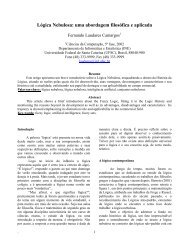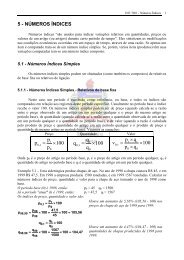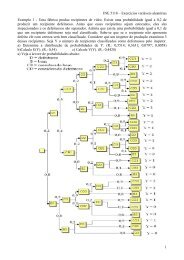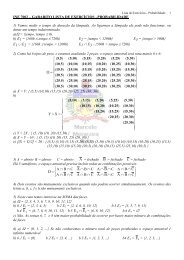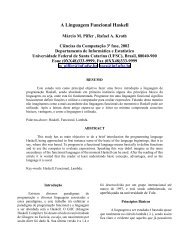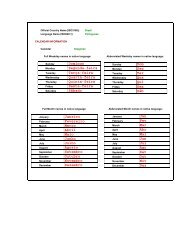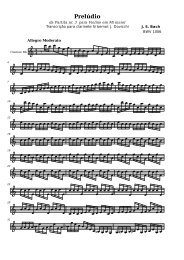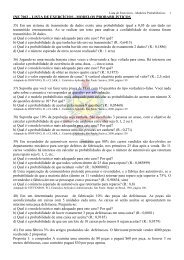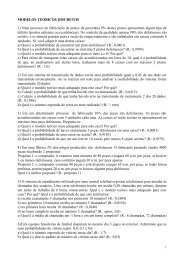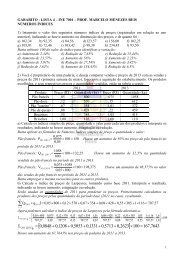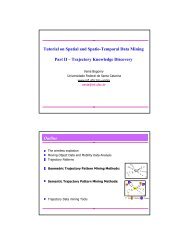Anais do IHC'2001 - Departamento de Informática e Estatística - UFSC
Anais do IHC'2001 - Departamento de Informática e Estatística - UFSC
Anais do IHC'2001 - Departamento de Informática e Estatística - UFSC
Create successful ePaper yourself
Turn your PDF publications into a flip-book with our unique Google optimized e-Paper software.
<strong>Anais</strong> <strong>do</strong> IHC’2001 - IV Workshop sobre Fatores Humanos em Sistemas Computacionais 73<br />
Comparing usability evaluation methods applied to<br />
corporate web portals<br />
Cláudia Dias<br />
Depto <strong>de</strong> Ciência da Informação e Documentação - Universida<strong>de</strong> <strong>de</strong> Brasília<br />
AOS 04 Bloco A apt 522 - Brasília - 70660-041, Brazil<br />
claudiaad@yahoo.com<br />
Abstract. The variety of usability evaluation methods, the need to adapt them to<br />
the system's context of use, and the technological evolution of information<br />
management - the corporate web portal - suggested the research problem of<br />
comparing usability evaluation methods, applied to corporate portals’ context of<br />
use. The goal of the present study was first to compare four usability evaluation<br />
methods, when employed by non-expert people, and second to verify the influence<br />
of the evaluators' experience and abilities on the results of usability evaluations<br />
of web portals.<br />
Keywords: usability evaluation, corporate portal, web interface, humancomputer<br />
interaction<br />
Introduction<br />
In or<strong>de</strong>r to compare usability evaluation methods applied to corporate web portals, the<br />
context of use of the sample portal, selected for this study, was first analyzed, i<strong>de</strong>ntifying<br />
its typical users, their characteristics, the tasks they seek to achieve, and their<br />
organizational and computing environments. After that, during the literature review about<br />
usability and human-computer interaction, 17 usability evaluation methods were selected:<br />
eight inspection methods and nine user testing methods.<br />
To choose the methods that would be compared in this study, 11 criteria were<br />
established: procedure and typical location of data collection, data type and source,<br />
<strong>de</strong>velopment phase and status, usability factors measured by the method, cost of<br />
evaluation, reliability of measurements, technical support nee<strong>de</strong>d, and additional costs, like<br />
users' involvement, materials, training. Among the evaluation methods pre-selected, four<br />
inspection methods were chosen, according to these criteria:<br />
• a standard for the ergonomy and usability of information technology products - the ISO<br />
9241-10 Dialogue principles (ISO, 1996);<br />
• an ergonomic <strong>de</strong>sign gui<strong>de</strong>line - the Ergonomic Criteria (Bastien & Scapin, 1993);<br />
• a checklist - the Usability In<strong>de</strong>x Checklist for Websites (Keevil, 1998); and<br />
• the heuristic evaluation, whose support tool - the Corporate Portal Heuristics (Dias,<br />
2001) - was elaborated for this research, based on the context of use of the sample<br />
corporate portal and on several principles or heuristics published by usability authors.<br />
To compare not only the quality of the chosen methods, but also the effect of the<br />
evaluators' experience and abilities, the usability inspection of the sample corporate portal



